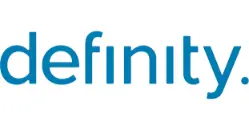One of the things we love doing is translating Agile for non-techies! It’s one of the best aspects of the Agile movement is its applicability beyond software. Several years ago I presented at a Pecha Kucha style evening with the Victorian Chapter of International Association of Business Communicators on the topic of how to translate Agile for Communicators.
The corporate world in general is undergoing a process of mimetic isomiorphism (otherwise known as “Corporate Me-tooism” with regards to “agile”. Mimetic Isomorphism is a term coined by organisational sociologists Paul Di Maggio and William Powell in a profoundly disruptive 1983 journal article (1). It describes how organisations copy each other’s strategy and structure because they think there will be beneficial outcomes.
There’s many large organisations now who have made dedicated inroads in to “going agile” – BHP Billiton, Qantas, Caltex, Coca-Cola Amatil, IAG, Suncorp, Seven West Media, Woodside Petroleum, Macquarie Group, corporate after corporate going agile …
Or at least they say they are… This was one of the points I was making in my talk – the world is going Agile often without any thought or recognition of its origins with the Agile Manifesto. So for the benefit of those who were not at IABC Victoria’s cracker of a night, here is the content of what I shared.
Keep in mind it is brief – the format was five slides in five minutes… and um, apologies to software developers…
Agile is a story of snowballing
Once upon a time (2001) a bunch of software coding type people were playing at a conference in Utah, and lamented – if only we could just get on with our job and behave like real humans and work together, we would do everything so much faster and make real cool stuff. And they sat around created what is now known as the Agile Manifesto. It was in essence a statement of culture that creates quality stuff at speed.
The four values of Agile, snowballed to the 12 principles. The software companies that used this manifesto saw amazing results which led project management folk to think if coders can do things faster and better quality, then why can’t we use this on things other than software? And so they did.
Agile snowballed to generic project methodology and was so successful that senior management said well if coders and project teams of all kinds of types can use these principles and improve performance why can’t we use this culture for our organisations?
And the snowball got bigger and bigger. So now we come to a point where communications professionals are introduced to the term agile, often unaware there are four fundamental values that form the foundation of the movement. Let’s unpack them
Value 1: individuals and interactions over processes and tools
This value is lived through the rituals which essential help people to interact – daily stands ups called scrums, and retrospectives where you look back at a defined period of time to work through what worked, what didn’t and how to iterate with that learning.
Visual management is also an example of this value – You communicate ideas incomplete and in big A3 printouts where people walk by – this creates buy in and you encourage the discussion.
Value 2: working software over comprehensive documentation
When we value working software over comprehensive documentation we do away with 50 page communication strategies and plans. It forces us to think about the MVP. Minimal Viable Product – In agile your quality gate is what is the minimum viable product (or process) we can create and ship. How liberating them to think about how communication support in the same way – strip away the fancy stuff and the bells and whistles and critically examine what is the most effective and simple way of communicating this idea?
Another thing is to use collaborative communication tools to just do it, rather than write about it. Use yammer for real time FAQ rather than a perfect document that rarely gets opened. Use trello for fully visible stakeholder issues management to everyone on the team. Ultimately done is better than perfect. Ship it!
Value 3: Customer collaboration over contract negotiation
This value speaks to us of the power of transparency, vulnerability and trust in our communications. We lose the defensiveness of “that’s not our role” and Service Level Agreements and we focus on how can we collaborate with our customers (internal or external) to respond nimbly to issues with our customers, and anticipate what is to come with them.
It means as communicators we need to have the hard conversations about control and sign offs with our managers and sponsors in the organisation. There are great examples of brand teams being able to capitalise on news-jacking because they do not need to get legal / executive sign off – just google the term “news jacking’.
Value 4: Responding to change over following a plan
It has been observed more than once that communications professionals like control. Give it up. To be agile you need to let go of the plan. What makes this easy for us though is data. You must be using communication platforms that gives you real time data (readership, clicks, topics that engage, feedback) that enable you to see what is changing and how you need to respond, rather than ignore and follow your plan.
Perhaps the two biggest challenges for communicators when organisations move towards agile either in projects or at an organisational level 1) you need a supportive culture of trust and empowerment and 2) you need to be good at what you do. Very good. Time protects those who are not good at their game, and agile doesn’t give you that time!
Dimaggio, P. J., & Powell, W. W. (1983). The iron cage revisited: Institutional isomorphism and collective rationality in organizational fields. American Sociological Review, 48(2), 147–160


































